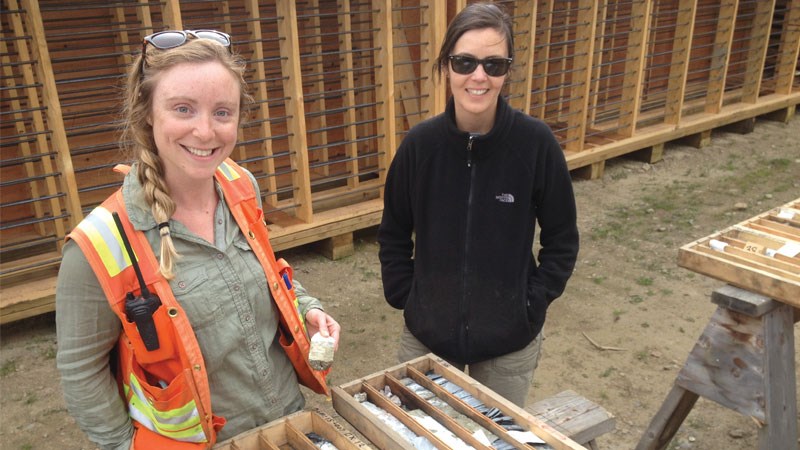One year ago, the share price for B.C.’s largest mining company, Teck Resources Ltd., had fallen below $4, and some analysts were predicting it would follow more than a dozen American coal mining companies into bankruptcy.
One analyst predicted the company’s stock would drop to $1 per share.
One year later, the company’s stock has moved back above $30, and Teck CEO Don Lindsay stood in front of his industry peers and cheerily dished out some crow for those analysts at the Association for Mineral Exploration BC’s (AME BC) Roundup 2017 conference in Vancouver.
“We had analysts and prognosticators telling us that we would never recover and that the industry was doomed,” Lindsay said. “Next time you see that, buy Teck.”
For the first time in four years, there was a sense of optimism at the annual conference that the mining and exploration sectors have survived one of the worst downturns ever and have good prospects ahead.
“There is a palpable sense that a turnaround is real,” says AME BC CEO Gavin Dirom.
The mood was similarly upbeat at the Cambridge House International Resource Investment Conference at the Vancouver Convention Centre West.
Mickey Fulp, publisher of the Mercenary Geologist and one of the Cambridge House conference speakers, points to the performance of the TSX Venture Exchange – which bottomed in January 2016 at 474 and is now around 809– as an indicator of the returning investor confidence.
“That’s [better than] a 50 per cent gain,” Fulp said. “And commodity prices have increased, and you’ve got [U.S. President Donald] Trump, and this infrastructure build-out – all of this kind of lining up. I think it’s going to be a very good year.”
Minerals and metals prices are rising, investor confidence in the majors is returning, and those majors are keen to restock depleting minable reserves, which means many juniors with promising deposits will find some willing partners or buyers.
Added Goldcorp CEO David Garofalo: “Our reserves, as an industry, have been declining for about five years consecutively. If you look at the top three producers of the world – including Goldcorp and Barrick Gold and Newmont Mining – collectively and individually we’ve seen our reserves decrease by about one-third.”
Because it takes a decade to bring a new mine from discovery to production, the majors are looking to the junior exploration sector to bring them new mineral deposits.
Garofalo said a company like Goldcorp typically needs 15 to 20 “names” in its portfolio.
One of the newest names in that portfolio is Kaminak Gold near Dawson City, Yukon, which Goldcorp bought last year for $500 million.
Cariboo
Meanwhile, Barkerville Gold Mines reports a recent discovery at its Cariboo gold project that triggered an impressive jump in the company’s stock price.
Shares in Barkerville rose over 16 per cent after exploratory drilling unveiled a network of high-grade veining in the Island Mountain area of the company’s tenures, which cover 1,164 square kilometres along a 60-kilometre-long deposit that includes several former hardrock mine sites in the historic Barkerville gold mining camp near the town of Wells, B.C.
“These intersections are some of the best to date on Island Mountain, [which] continues to produce new zones of higher grade, wide zones of gold mineralization,” said Chris Lodder, president and CEO of Barkerville Gold Mines.
There has been lengthy debate around whether company founder Frank Callaghan had been justified in making the expansive claims about the property that led to his downfall.
Callaghan first made headlines when the then-CEO advised that one of his properties, Cow Mountain, had indicated resources of 10.6 million ounces of gold at grades of 5.26 grams per tonne.
The BC Securities Commission immediately challenged these claims and halted the company’s shares for over a year while it commissioned a new resources estimate.
Callaghan resigned as CEO of Barkerville in 2014, and as a director of the company in 2015.
The question now remains: was Callaghan right after all?
In a sense, maybe, said Fulp.
“These new drill holes they have are in the Island Mountain area and those were never explored during Callaghan’s tenure,” Fulp said. “It is a past-producing gold mine, but this is essentially a new discovery based on the very good geological understanding of the current gold mineralization.”
Mineral exploration company Osisko Mining Corp. took a 17 per cent stake in Barkerville in 2016, reigniting interest in the area.



